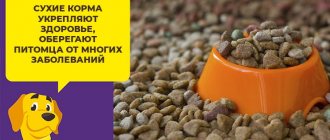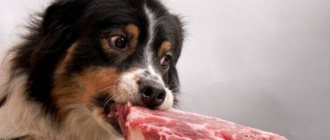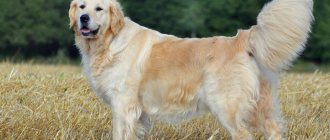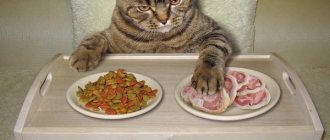Shorthaired Pointer puppies are incredibly sweet and loyal animals. They will become reliable friends for children and adults, and when they grow up, they will become excellent hunters. The appearance of these active kids in the house is always accompanied by fun and pranks. They simply cannot sit still and study the world around them with interest. Caring for pets is not difficult, and the joy they give is limitless.
Shorthaired Pointer puppies are incredibly sweet and loyal animals.
Even at a young age, dogs learn to overcome obstacles, hunt and follow a scent. They are incredibly intelligent and have high learning abilities. Choosing a shorthaired pointer puppy is the right decision if you want to find a true friend and devoted protector.
Character traits
From birth, Shorthaired Pointers have a very developed protective instinct. Therefore, adult dogs become excellent watchdogs. They are suitable for keeping in a country house.
Animals are incredibly attached to their owner and all family members. They love constant attention and do not tolerate loneliness well. If you don't take care of socialization, dogs can grow up to be fearful or, conversely, aggressive. Like any hunting dog, the shorthaired pointer needs a strong, strong-willed and decisive owner. He must immediately show who is the boss of the house. At the same time, leadership cannot be demonstrated through physical assault and shouting: this will only intimidate the animal and make it uncontrollable.
The appearance of these active kids in the house is always accompanied by fun and pranks
Shorthaired Pointers have a highly developed intellect and have irrepressible energy. The combination of these qualities requires that the dog be busy with something all the time. Training is the best activity for distracting and developing the qualities of a dog. It is not only useful, but also brings joy to the animal.
Proper nutrition
The first thing a new owner is interested in is what to feed the new family member. Since moving to a new place of residence is always a serious stress for a baby, you need to try not to aggravate the situation by providing the puppy with the usual diet. Even changing the brand of dry food can trigger an eating disorder. Therefore, new products must be introduced gradually and as carefully as possible.
Animals are incredibly attached to their owner and all family members
You can feed the shorthaired pointer:
- low-fat milk, kefir and cottage cheese;
- cheese and raw chicken eggs;
- boiled and raw veal, beef and chicken, but not earlier than 3 months of age;
- porridges from any cereals, except pearl barley;
- boiled sea fish added to porridge.
Feeding shorthaired pointer with dry food
If you decide to feed your dog industrial diets, then you need to choose premium or super premium food, which are made from high-quality raw materials. The choice of such food is large, but for the shorthaired pointer it is necessary to choose food from those intended for active dogs or athletes.
This diet is especially necessary for a dog during active hunting. Dry food must also be carefully selected according to the age of the dog, since at different periods of its life, it has different body needs. Thus, food for puppies is designed for intensive growth, and food for older dogs is the prevention of many age-related diseases.
You should strictly follow the daily dose of food indicated on the packaging. It cannot be increased if the dog really likes the food, this can have a very bad effect on the health and performance of the shorthaired pointer. For puppies up to three months of age, feed granules are soaked in water or kefir. From the age of five months, hard granules of the required size are suitable, chewing which helps in the timely change of teeth.
When feeding a shorthaired pointer with high-quality food, it is better not to give the dog any additional foods or additives. This food is well balanced and any additive can lead to a number of diseases and metabolic disorders.
To grow and gain strength, shorthaired pointer cubs must receive a varied and balanced diet.
Important!
For the glands responsible for metabolism to function properly, the puppy must receive at least 50 grams of raw meat daily.
At this age, children are introduced to boiled sea fish. Meat and fish are given along with porridge.
Any cereal is suitable except pearl barley. They need to be fortified with grated vegetables.
It is useful to add vitamins to food. And from 3 months of age you need to give 2 teaspoons of fish oil daily.
You should not feed puppies sharp bones, especially chicken bones. Babies do not know how to eat them and choke, and fragments of chicken bones can injure the puppy.
Up to 2 months of age, puppies are fed 6 times a day, 4 months old - 5 times, 6 months old - 3 times.
A one-year-old shorthaired pointer is transferred to an adult diet and diet.
Feeding the shorthaired pointer with ready-made food simplifies the situation.
Special foods take into account the puppy’s need for all elements and vitamins.
Upbringing
Raising a puppy is not a difficult task, but it requires great responsibility from the owner. The character of dogs is quite soft and calm. Dogs are very friendly, emotional and energetic. It is necessary to start working with an animal immediately after it appears in the house. However, when training a shorthaired pointer, it is important not to overdo it. It should be taught gradually. To make sure your puppy tries hard, don’t forget about rewards. You can use pieces of meat, liver or any other delicacy for them.
Shorthaired pointers that are trained for hunting must undergo field and indoor training. If you have acquired a companion, it is enough to simply raise him well. At 6 months the animal should be able to:
- follow the commands “sit”, “lie down”, “place”, “fetch”;
- respond and run to the owner’s call;
- know and execute the “fu” command;
- walk next to the owner.
Gallery: shorthaired pointer puppies (25 photos)
How to teach a puppy to be neat?
If a puppy was purchased from a kennel, the concept of neatness simply does not exist. The owner must take care to accustom the animal to cleanliness. It is not recommended to teach your pet to go to the toilet on rags or diapers. The baby will quickly get used to this and will soon perceive any clothing, soft carpet or even furniture as a toilet.
If you are setting up a toilet for your puppy at home, it is better to put newspaper, sand or straw in it. Special granules that are sold in pet stores are also suitable. After the dog relieves itself in a specially designated place, it must be praised. Within 3-4 days the puppy will get used to the toilet. The owner will only have to ensure that the toilet filling is always dry and clean.
At 3-4 months, the shorthaired pointer needs to be taught to go to the toilet only outside. To do this, early in the morning, when the puppy has not yet fully woken up, you need to take him out into the yard and walk him until he satisfies all his physiological needs. If the procedure is repeated daily, by 6-8 months the dog will get used to the rules. However, if misfires sometimes occur, you should not scold your pet: unlike an adult animal, he has not yet learned to control his body well.
Care and feeding of a shorthaired pointer puppy
When caring for a shorthaired pointer puppy, the owner must perform every action with the utmost caution so as not to cause pain or discomfort to the animal, thereby not causing rejection of a particular procedure.
Regular care of the shorthaired pointer and proper maintenance from an early age will help raise a strong, hardy, energetic and cheerful pet.
Feeding a shorthaired pointer puppy and an adult has its own characteristics and differences. In the first month of life, the puppy should eat its mother's milk. In the absence of such an opportunity, the owner takes care of feeding the baby, using formula with cow or goat milk for the first months, gradually including dairy products such as cottage cheese, kefir, fermented baked milk, and yogurt in the diet. From 3 months, the amount of milk is reduced, solid foods are introduced into the diet: offal and cartilage, which are necessary when changing teeth. It is too early to give minced meat during this period, since the puppy is not yet able to chew it thoroughly, which means it will not be digested well.
It is useful to give porridge from any cereal cooked in meat broth from the 3rd month of life. Barley and potatoes should be avoided. Salt is also not needed when preparing dog dishes.
There are many options for what to feed a shorthaired pointer puppy, the main thing is to make the menu varied and balanced, containing proteins, fats, carbohydrates, vitamins, minerals, and fiber. Fiber is found in various vegetables: zucchini, cabbage, pumpkin and others.
For the first 5 months, feeding a shorthaired pointer puppy should be done 5 times a day, starting from the age of six months, its number is reduced to three. Upon reaching 12 months, the grown and strengthened pet is transferred to two meals a day.
When preparing a diet for a puppy, you need to completely exclude sweets, flour products, spicy, fried and smoked foods, as well as tubular bones.
When to get vaccinated?
Like all dog breeds, shorthaired pointers do not need vaccinations until they are 2 months old. During this time, they retain maternal immunity. The first vaccination is given at 2.5 months. Injections for hepatitis, enteritis and plague. 2 weeks before taking the puppy to the veterinary clinic, it is necessary to carry out deworming. In the future, it should be repeated every 3 months.
One vaccination is not enough to develop lasting immunity to dangerous diseases. Therefore, a whole range of measures is required, usually spread out over a year. To avoid complications, it is better to refuse vaccination during the period of teeth change. Usually it occurs within 4-5 months.
What to feed the puppy?
Feeding puppies will begin on the 21st day after birth, they are fed 3 times a day with warm milk, and milk porridge and meat broth are added per month - once a day.
On day 90, you need to add cartilage and offal to the diet. Ryazhenka, cottage cheese or kefir are allowed among dairy products.
Puppies are given food in small portions. We must ensure that they do not overeat.
Feeding the puppies:
- every 2 hours - from birth to 2 months;
- 5–6 times - from 2 months to 3 months;
- 4 times - from 3 months to 6 months;
- 3 times - from 6 months to 10 months;
- 2 times - from 10 months onwards.
Physical exercise
As mentioned above, Shorthaired Pointers are incredibly energetic and active. They cannot sit still and without proper physical activity they can turn the whole house over. In addition, without proper exercise, animals become aggressive, shy and unfriendly with age. Therefore, the owner must make sure that the dog has somewhere to throw out its accumulated energy.
It is important to follow a few simple rules:
- it is better to give the animal short and frequent loads rather than rare and exhausting exercises;
- You can only play and run with a puppy without a leash in safe and reliable places: the animal does not understand the dangers of transport;
- physical activity should be regular;
- loads should be increased carefully and gradually as the dog grows older;
- You need to know moderation in everything; even when raising a working pet, you should leave him enough time for rest and play.
Any task for the Shorthaired Pointer should be a joy. Remember that it is still small, so it may not withstand too much and intense loads.
Shorthaired Pointers are dogs with amazing natural characteristics. They have excellent physical capabilities, elegant appearance and boundless devotion. But do not forget that animals require proper care and regular exercise. By following these rules, you will find a loyal, reliable and devoted friend.
Advantages and disadvantages
The advantages of the breed include:
- activity and friendliness;
- universal hunting and guard skills;
- intelligence, ability to train;
- lack of predisposition to diseases (,);
- relatively long lifespan.
Disadvantages of the breed:
- need for regular active walks;
- innate energy may affect relationships with other pets;
- More suitable for hunting than for regular housekeeping.
Innate hunting qualities, combined with excellent guarding talent and the loyalty of a true friend, make the shorthaired pointer a desirable pet. Bring this smart and affectionate animal into your home - and life will become brighter!
Additionally, check out the video about German pointer shorthaired pointers: description of the breed, disadvantages and advantages, and much more.
Feeding the shorthaired pointer has its own characteristics and this is due to the fact that it is a hunting dog and, like all representatives of hunting breeds, it is very energetic and active.
If you buy a puppy from a smart breeder, then he should give you a detailed answer to the question “What to feed a shorthaired pointer and how to do it correctly”? Performance and overall health largely depend on the quality of nutrition and regimen. And at different periods of a dog’s life, nutrition should correspond to the age-related needs of the shorthaired pointer.










